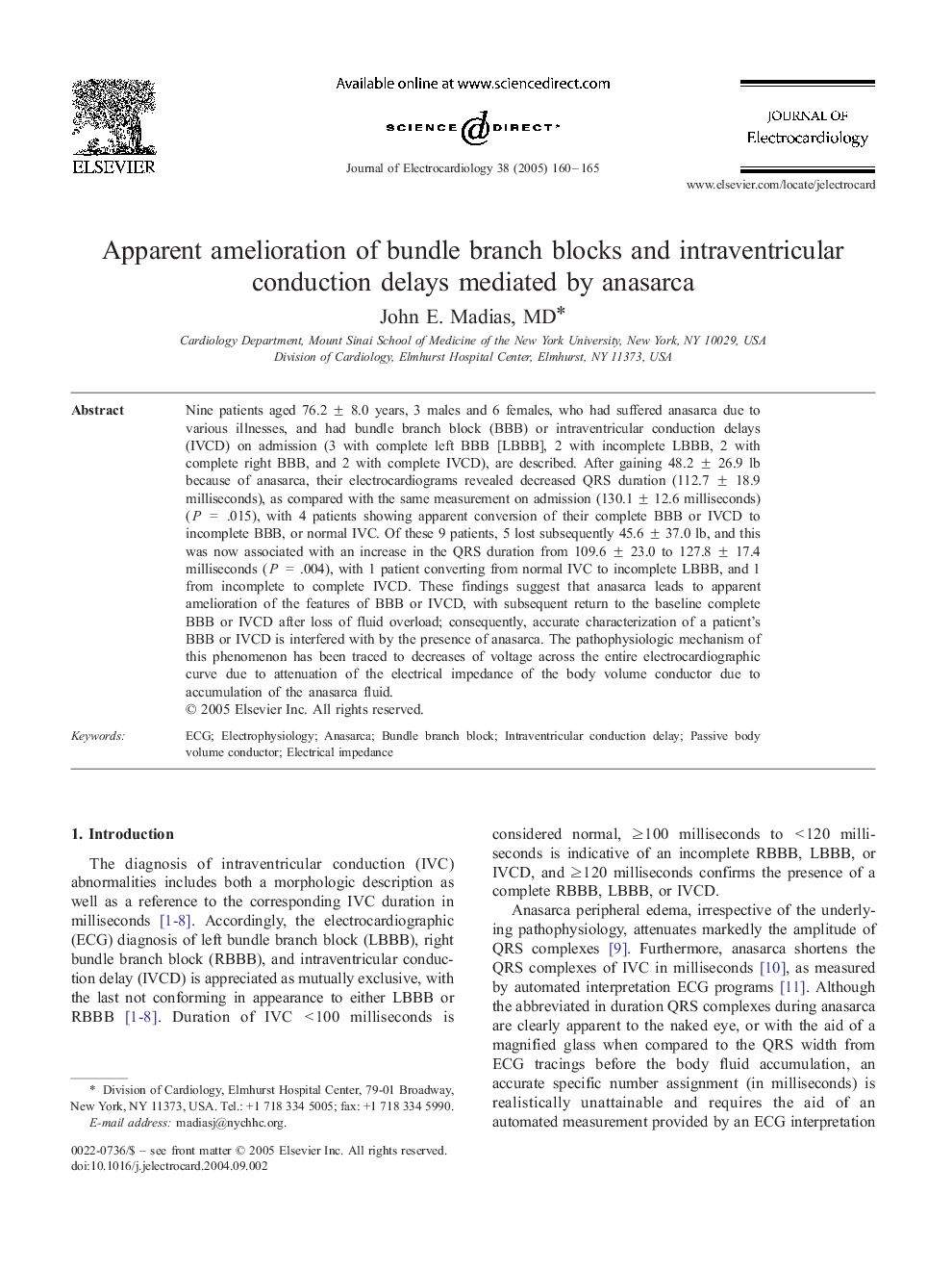| Article ID | Journal | Published Year | Pages | File Type |
|---|---|---|---|---|
| 9171545 | Journal of Electrocardiology | 2005 | 6 Pages |
Abstract
Nine patients aged 76.2 ± 8.0 years, 3 males and 6 females, who had suffered anasarca due to various illnesses, and had bundle branch block (BBB) or intraventricular conduction delays (IVCD) on admission (3 with complete left BBB [LBBB], 2 with incomplete LBBB, 2 with complete right BBB, and 2 with complete IVCD), are described. After gaining 48.2 ± 26.9 lb because of anasarca, their electrocardiograms revealed decreased QRS duration (112.7 ± 18.9 milliseconds), as compared with the same measurement on admission (130.1 ± 12.6 milliseconds) (P = .015), with 4 patients showing apparent conversion of their complete BBB or IVCD to incomplete BBB, or normal IVC. Of these 9 patients, 5 lost subsequently 45.6 ± 37.0 lb, and this was now associated with an increase in the QRS duration from 109.6 ± 23.0 to 127.8 ± 17.4 milliseconds (P = .004), with 1 patient converting from normal IVC to incomplete LBBB, and 1 from incomplete to complete IVCD. These findings suggest that anasarca leads to apparent amelioration of the features of BBB or IVCD, with subsequent return to the baseline complete BBB or IVCD after loss of fluid overload; consequently, accurate characterization of a patient's BBB or IVCD is interfered with by the presence of anasarca. The pathophysiologic mechanism of this phenomenon has been traced to decreases of voltage across the entire electrocardiographic curve due to attenuation of the electrical impedance of the body volume conductor due to accumulation of the anasarca fluid.
Keywords
Related Topics
Health Sciences
Medicine and Dentistry
Cardiology and Cardiovascular Medicine
Authors
John E. MD,
